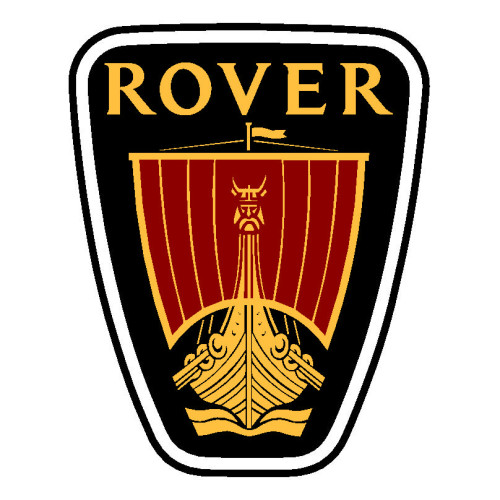Because BMW have been whoring the new i3 electric city car all over the internet for the past couple of weeks, and Jaguar have launched the new R version of the XJ (which, of course, they strenuously denied would ever exist back when the XJ was launched), my thoughts have been turning to the Rover brand.
What? That’s an entirely natural thing to do…!
Rover is, of course, dead and has been for nearly a decade. The famous longship, which one sailed proudly across the upper levels of the British motor industry, sank into a sea of K-Series engine mayonnaise, weighed down by a surplus cargo of debt, mismanagement, tartan picnic rugs and string-back leather driving gloves.
Many people will say that this is good riddance to bad rubbish, but I don’t agree. While, quite understandably, Rover is associated with some of the dregs of the car industry to much of the general public, the brand itself deserves more than that, as I detailed at great length last year. For the majority of its existence Rover was either a maker of solid, dependable and stylish gentlemen’s expresses or some of the most cutting edge and desirable saloon cars ever made. At its best it managed to combine both.
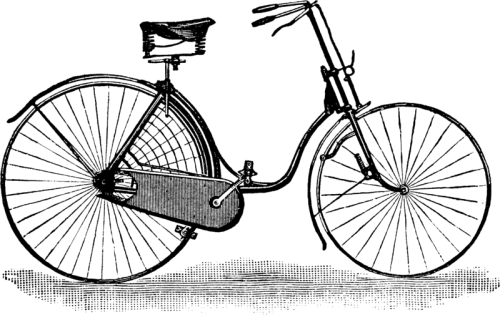 A century later the name would be being glued onto the front of a small saloon from Japan. The mind boggles.
A century later the name would be being glued onto the front of a small saloon from Japan. The mind boggles.
This is a company that, having invented the modern bicycle (estimated global population of bikes based on the ‘Rover Safety Bicycle’ design, 1.2 billion!), then spent some time trying to make the gas turbine car a reality before deciding to invent the executive saloon in its accepted form. Rover then invented a whole new type of car with the Range Rover and then built a fastback saloon that looked and went like a Ferrari but for a fraction of the cost. Even when the badge was slapped on wildly inappropriate cars that began life as Hondas or Austins there were flashes of the old brilliance, such as the K-Series engine which was flawed genius if ever there was.
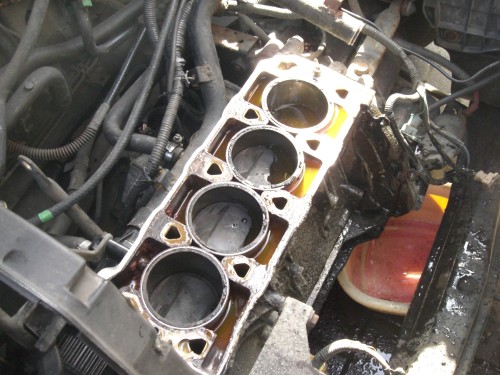 They were pretty big flaws, mind.
They were pretty big flaws, mind.
While the final products of Rover are now in the hands of the Chinese the brand has returned to its spiritual home at Solihull. It lies in the hands of Tata Motors and their Jaguar Land Rover subsidiary, due to a complex series of legal agreements to protect the image of the Land Rover and Range Rover brands (both, of course, former Rover Company model names). So the longship logo sits in a filing cabinet in the West Midlands, a sad remnant of a former glory, kept in fossilised form only to guard the worth of its more successful children.
I don’t think it has to be that way, though, and now we come to why the recent activities of Jaguar and BMW made me think of Rover.
Jaguar Land Rover is on something of a roll at the moment, and has been ever since Tata Motors took over the pair in 2008, helped greatly by the effort that Ford put into the brands but didn’t have the guts to stick around to reap the benefits of. A slew of fresh, innovative and class-leading models (the XF, the XJ, the Range Rover Evoque, the third-gen Range Rover, the Range Rover Sport, the F-Type and a host of new variants on those models) have turned a bit-player back into a significant global force. Jaguar was a troubled brand for much of the last decade of the 20th century, plagued by reliability and image problems that weren’t far behind Rover’s, while Land Rover has had mixed fortunes, with products that remain unerringly popular despite a tendency to self-destruct and low profit margins. Now JLR’s plants are working flat out, profits are pouring in by the billions and both Jaguar and Land Rover are enjoying cachet and global appeal (not to mention actual relevance on the car market) that neither have enjoyed since the early ‘Seventies.
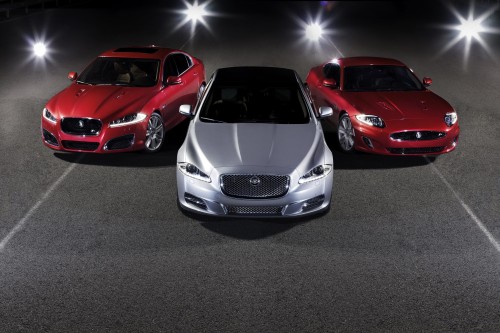 There is a dark lining to this silver cloud, however, and it takes the form of the environmental imperative. JLR’s product range is deeply environmentally unfriendly from a legislative point of view. The emphasis on low CO2 outputs puts a company that makes only sports cars, big sports saloons and various flavours of 4×4 at a huge disadvantage.
There is a dark lining to this silver cloud, however, and it takes the form of the environmental imperative. JLR’s product range is deeply environmentally unfriendly from a legislative point of view. The emphasis on low CO2 outputs puts a company that makes only sports cars, big sports saloons and various flavours of 4×4 at a huge disadvantage.
This can’t be sustainable in the long term, both in terms of the environment and economics. Yes, someone who can spunk £90,000 on a Range Rover isn’t going to worry about the £800-odd road tax or the huge congestion charge or even the fuel bills but that’s a situation that’s only going to get worse. To JLR’s credit they are doing sterling work with lightweight construction and hybrid drivetrains to improve their fleet’s environmental performance but the time will come when any Range Rover-type vehicle becomes unfeasible through a combination of politics, economics and ethics for all but the very wealthy.
Jaguar is in a very similar situation. In a simple world the answer would be obvious- make smaller, more economical vehicles. Unfortunately the modern world is one dominated by brand values and JLR relies very heavily on the cachet of both its brands to justify the high prices that make it so profitable, despite the company’s production volumes which are still small-fry on a global scale. This is another problem waiting in the wings. Modern cars are hugely expensive to develop and much of JLR’s success is down to nothing more than the billions of pounds of R&D money that Tata has put the company’s way. To make this back you can sell a few cars for a lot of money (as JLR does now), but as Henry Ford proved over a century ago it’s better to sell lots of cars for a little money. The more cars you make the cheaper those hefty R&D costs are per car and you can start doing things like platform sharing and drivetrain swapping.
That’s fine when you’re starting from scratch but JLR’s brands are built around exclusivity and being near the top of the automotive pile. At the same time the mass-market car is rapidly becoming an endangered species, with companies dependant on this sector like Peugeot, Renault, Opel and Chrysler in severe financial difficulties.
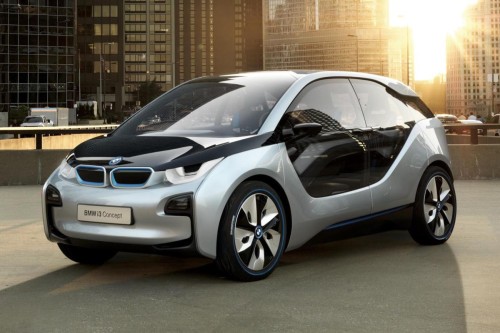 BMW have faced the same problem, being a relatively small company with no corporate partners that relied entirely on building fast, thirsty cars. In fact BMW’s purchase of the Rover Group was an attempt to do precisely what JLR need to do- sell more cars by getting closer to the mass market. BMW kept MINI, which has done them very well by allowing them to sell lots of small, economical cars at a huge mark-up due to the premium brand. But even now we’re seeing the ‘proper’ BMW range fall into line, with the emphasis on ‘Efficient Dynamics’ and now the i3 electric concept car.
BMW have faced the same problem, being a relatively small company with no corporate partners that relied entirely on building fast, thirsty cars. In fact BMW’s purchase of the Rover Group was an attempt to do precisely what JLR need to do- sell more cars by getting closer to the mass market. BMW kept MINI, which has done them very well by allowing them to sell lots of small, economical cars at a huge mark-up due to the premium brand. But even now we’re seeing the ‘proper’ BMW range fall into line, with the emphasis on ‘Efficient Dynamics’ and now the i3 electric concept car.
JLR can downsize to a certain extent, and indeed they have done, as the Range Rover Evoque and the upcoming ‘small Jaguar’ to compete with the BMW 3-Series/Audi A4/Mercedes C-Class proves, but this can only go so far without stretching the all-important brand values too far.
Both brands are also very ‘traditional’. Jaguar could launch a small saloon with a range-extender electric drivetrain but it would almost certainly be decried as ‘not a real Jaguar’.
What JLR needs is a brand that can be treated as a blank slate, but with a suitable heritage in cutting-edge automotive technology that can be extracted to give the brand some added value (so it doesn’t seem like a brand new ‘insta-brand’ like Lexus, Infiniti or Qoros). If it’s a brand with some British resonance then all the better, because that sort of things goes down well in the developing markets.
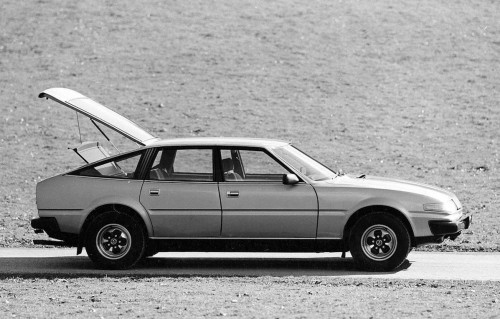 Luckily Rover could provide just that. The problem Rover and Jaguar had for all the years they were bedfellows in British Leyland was that they, essentially, made the same sort of car- big, fast, luxury saloons. BL tried to inject a little difference by making the Rover SD1 all pointy and avant-garde while keeping the Jaguar XJ very traditional but it didn’t work because under the skin the SD1 was about as advanced as a blacksmith’s anvil while the Jaguar XJ, for all its olde worlde charm, was very clever.
Luckily Rover could provide just that. The problem Rover and Jaguar had for all the years they were bedfellows in British Leyland was that they, essentially, made the same sort of car- big, fast, luxury saloons. BL tried to inject a little difference by making the Rover SD1 all pointy and avant-garde while keeping the Jaguar XJ very traditional but it didn’t work because under the skin the SD1 was about as advanced as a blacksmith’s anvil while the Jaguar XJ, for all its olde worlde charm, was very clever.
They were on the right lines, though. Jaguar have done sterling (Rover pun, there!) work recently by finally building cars that look modern or even a bit radical but still have a lot of the expected Jaguar styling cues.
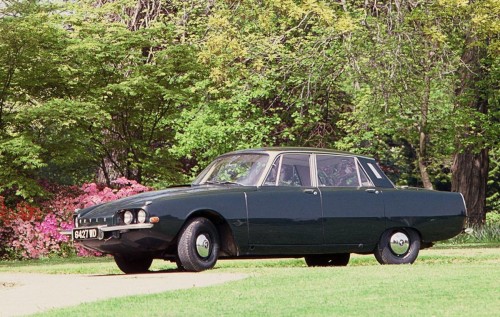 My hypothetical Rovers would be even more radical than the Jaguar XJ, which in many ways is still very classically styled. The divide between the two brand would be that Jaguar uses technology in a traditional disguise (like they do now) while Rover is very obvious about it. ‘Tech’ is becoming more and more of a selling feature in cars as people start to care more about emissions, economy and driving aids. The Rover for the 2020s would be styled to make a fuss of its tech, not to disguise it like a Jaguar. This is utterly in keeping with the 1963 P6 which was styled around its innovative body structure and advanced suspension. Similarly, while the interiors of modern Jags and Range Rovers are stupendously wonderful, they’re still very traditional (that is one of their many great points). However with a Rover you could make full use of JLR’s love of TFT screens instead of dials and have a sleeker, more modern style like the strip-dash of the early P6 or the functional yet strangely good-looking dash of the SD1. Maybe the Quartic steering wheel could make a reappearance? Or is that going too far?
My hypothetical Rovers would be even more radical than the Jaguar XJ, which in many ways is still very classically styled. The divide between the two brand would be that Jaguar uses technology in a traditional disguise (like they do now) while Rover is very obvious about it. ‘Tech’ is becoming more and more of a selling feature in cars as people start to care more about emissions, economy and driving aids. The Rover for the 2020s would be styled to make a fuss of its tech, not to disguise it like a Jaguar. This is utterly in keeping with the 1963 P6 which was styled around its innovative body structure and advanced suspension. Similarly, while the interiors of modern Jags and Range Rovers are stupendously wonderful, they’re still very traditional (that is one of their many great points). However with a Rover you could make full use of JLR’s love of TFT screens instead of dials and have a sleeker, more modern style like the strip-dash of the early P6 or the functional yet strangely good-looking dash of the SD1. Maybe the Quartic steering wheel could make a reappearance? Or is that going too far?
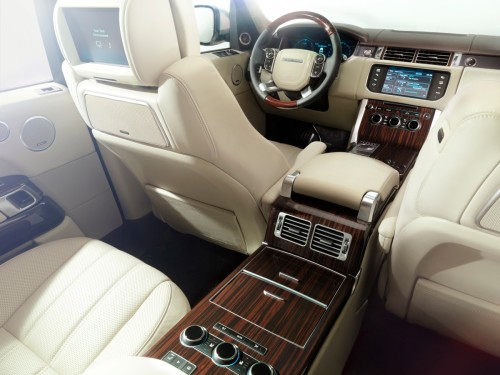 Now tell me that doesn’t remind you a little of an early SD1? Just me then…
Now tell me that doesn’t remind you a little of an early SD1? Just me then…
The new Rover range would slot beneath the Jaguar one- maybe meeting at the ‘Jaguar 3-Series’ model, which could platform share, and possibly spinning off from the Evoque/Freelander platform as well. In time there could be a proper ‘big Rover’, still along the same cutting-edge high-tech lines but based on whatever’s underpinning the XF by that stage. JLR win by decreasing their CO2 average and increasing their volumes as well as keeping up with (or even ahead of) the way motor industry is clearly going.
Exactly what tech JLR could choose, I don’t know. They seem keen on diesel-electric hybrid technology at the moment but one of the good points of having a brand dedicated to the cutting edge is that they could use new ideas as they become viable, such as hydrogen fuel cells or even full electric vehicles.
Of course, all this relies on marketing. I’m not so naïve as to fail to realise that any new Rover, especially one based around advanced technology, would be facing an uphill struggle for acceptance at the very best. However I don’t feel it’s an insurmountable problem. JLR are very good at marketing and they’re recent compound successes mean they have momentum where it counts. They have two whole range carrying the ‘Rover’ suffix that are very highly regarded. In fact in many markets, especially North America, ‘Rover’ is the generally accepted slang for a Land/Range Rover anyway. That could be a marketing ‘hook’- as wrong as it is chronologically, sell the new Rovers in the USA as ‘from the company that brought you the Range Rover…’.
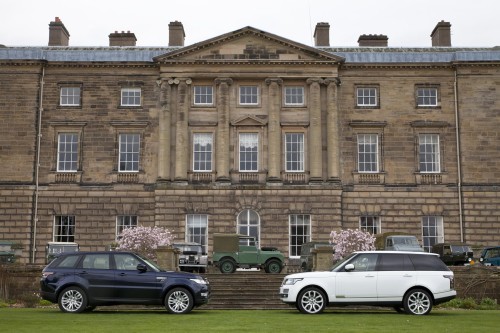 You can’t spell ‘Range Rover’ without, erm, ‘Rover’.
You can’t spell ‘Range Rover’ without, erm, ‘Rover’.
There are plenty of good bits of Rover history to cherry pick from, too. I can almost see the advert now:
“Since 1885 we’ve been improving the way people move about…[footage of Starley Rover Bicycle]…how we do that has changed [footage of Rover 12]…as the world has changed [Series 1 Land Rover] but we’ve always been looking at new ideas [JET 1] and then bringing them to more and more people [Rover P6]…”
You get the idea.
Yes, there’d be the inevitable jokes about head gaskets and Werther’s Originals but, as Skoda (and Jaguar) has found, it takes only one or two good products that demonstrably work, right off the bat, backed up by a good marketing campaign, to silence all of that malarkey. In 2005 Jaguar was still attracting lots of gags about golf and Freemasonry and it all seemed (sort of) justified. Less than 10 years later those quips have a rather hollow ring to them.
It would be huge risk and there are plenty of good reasons why JLR wouldn’t try to bring back Rover. I think that would be a shame though, because it’s a brand that deserves much better than it got and I feel it could work if the will was there.
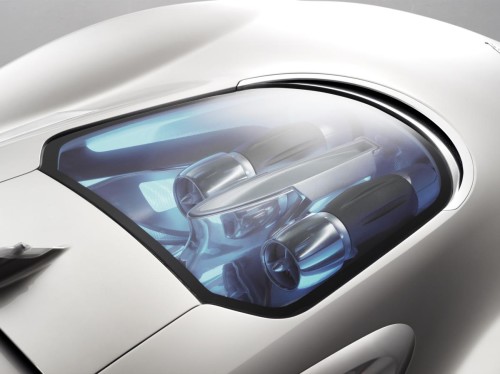 There is a good way JLR could get the ball rolling. Last year Jaguar built the C-X75 concept car, which was a daft hypercar powered by gas turbines and a hybrid drive with a claimed at-the-wheel horsepower of 800-and-something. They said they were going to build it then didn’t. However, in a marketing masterstroke they’ve kept fettling the pre-production cars to the extent where they’re essentially in ‘production spec’ then they’ve let journos drive them, albeit powered by a Formula One-style super-supercharged 1.6-litre engine rather than the turbines. Jag gets all the rave reviews and gets to show off their technology (which the C-X75s are playing a bit part in developing) while taking none of the financial risks of actually trying to sell the thing.
There is a good way JLR could get the ball rolling. Last year Jaguar built the C-X75 concept car, which was a daft hypercar powered by gas turbines and a hybrid drive with a claimed at-the-wheel horsepower of 800-and-something. They said they were going to build it then didn’t. However, in a marketing masterstroke they’ve kept fettling the pre-production cars to the extent where they’re essentially in ‘production spec’ then they’ve let journos drive them, albeit powered by a Formula One-style super-supercharged 1.6-litre engine rather than the turbines. Jag gets all the rave reviews and gets to show off their technology (which the C-X75s are playing a bit part in developing) while taking none of the financial risks of actually trying to sell the thing.
Let’s say that JLR announce that Rover will return. Step one needs to be to lightly restyle the C-X75 (or build a new Mk2 version) to remove some of the Jaguar-ness, fit it with the jets and then badge it as a Rover P11 in British racing green with the BRM orange nose. Rover was the first company to build a turbine car and a Rover-BRM ‘jet car’ raced at Le Mans. Say that the P11 is only a concept and a development project to underpin new production models but let lots of people drive it, run it up the hill at Goodwood and let Top Gear do burn-outs in it on telly. Do that for a year or so, or for however long it takes to properly develop the actual product, then hit them several million quid’s worth of marketing.
That’s as good a start as any Rover revival could get, in my opinion.
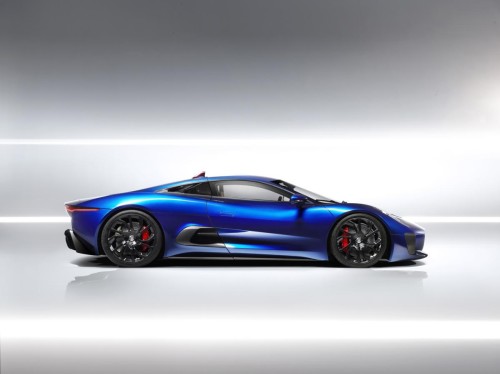 Leader By Nature, Paris By Lunctime, Car By Rover. It works.
Leader By Nature, Paris By Lunctime, Car By Rover. It works.
